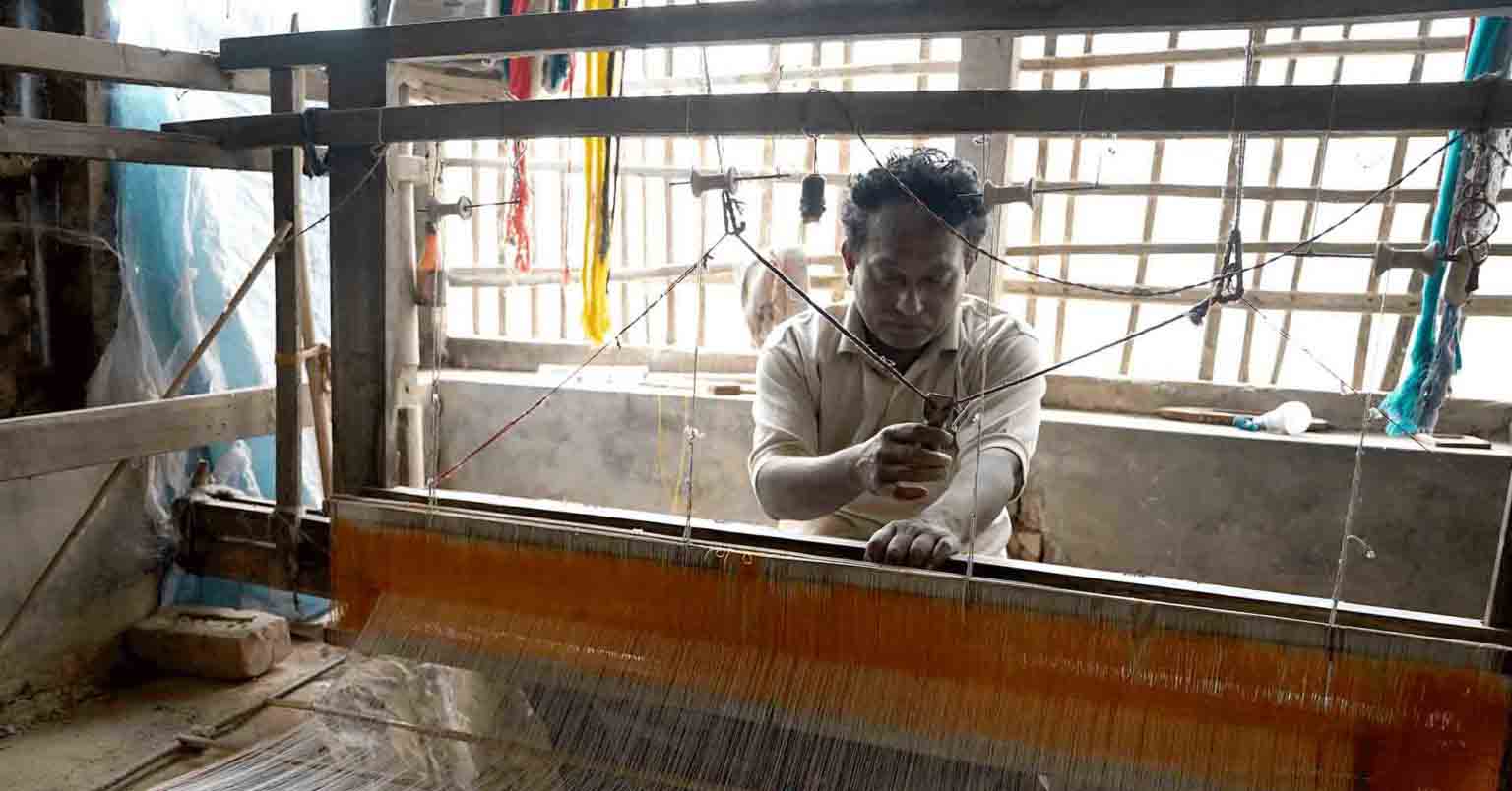
Of all the many cottage industries that had thrived in Bengal in the remote past and are being carried on with reputation till today, the handloom industry is by far the most remarkable. The rich tradition of Handloom Weaving in West Bengal is a part of its cultural heritage.
Handloom still remains one of the biggest sources of employment for the rural sector of Bengal.
3.5 lakhs handlooms exist in West Bengal till date. Santipur, Fulia in Nadia district, Dhaniakhali, Begampur in Hooghly district, Samudragarh, Dhatrigram, Katwa, Ketugram in Burdwan district, Bishnupur in Bankura district are the primary handloom concentrated areas in the state of West Bengal.
The history of textile manufacture in Bengal goes back to the remotest antiquity. At the time when the Arthasastra of Kautilya was composed, Bengal’s textile industry was already a well- established industry with a wide reputation in the country. In different periods of history, famous writers and travellers such as Marco Polo, Ma Huan, Ralph Fitch, Abul Fazal, Tavernier and others made eulogistic references to the famous cotton textile industry of Bengal producing excellent cotton textile goods, which led way to setting business connections with the outside world, revolving round this traditional craft. The British Museum website has a document from 1730 listing the range of textiles or the “piece goods” purchased in Bengal by the Company. It is fair to say that handloom products from Bengal dominated the market of textile goods throughout the world because of its unexcelled quality.
Although the forthcoming years have seen a gradual decline in the acceptability of handloom products, due to the advent of the power loom, the handloom industry in Bengal still strives to sustain its artistry and credibility. Some of the main reasons for handloom still being irreplaceable are that coarse yarn can never be woven in the mill sector, and the varying local tastes and needs can only be met by handloom precision.

Karustuti sustains Fairtrade handloom, and the creative potential of handloom artisans fighting their ill-fates, to helping them aspire weaving, living and believing!
Automated page speed optimizations for fast site performance